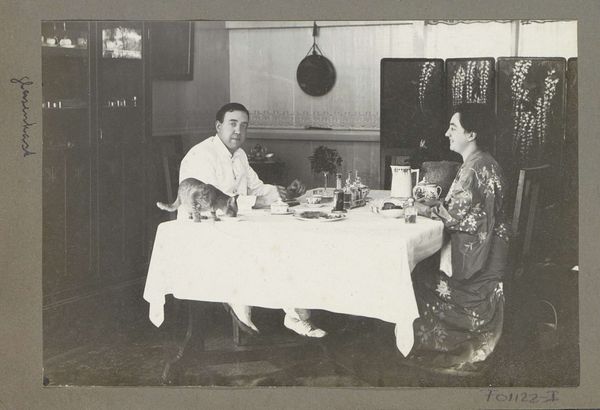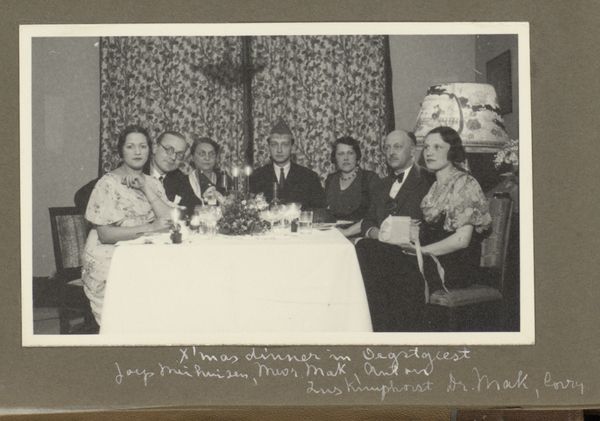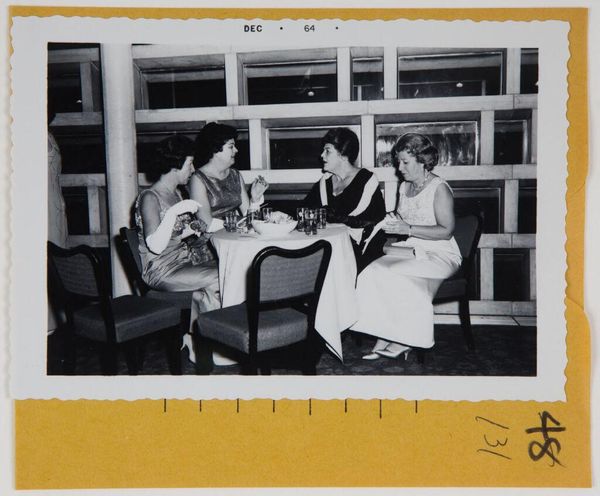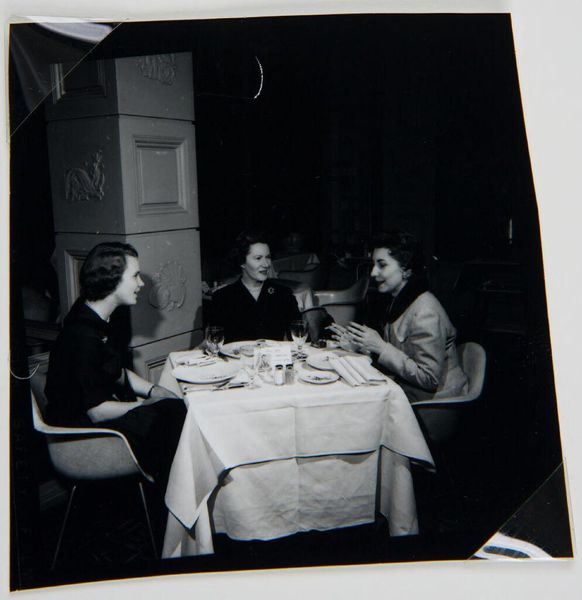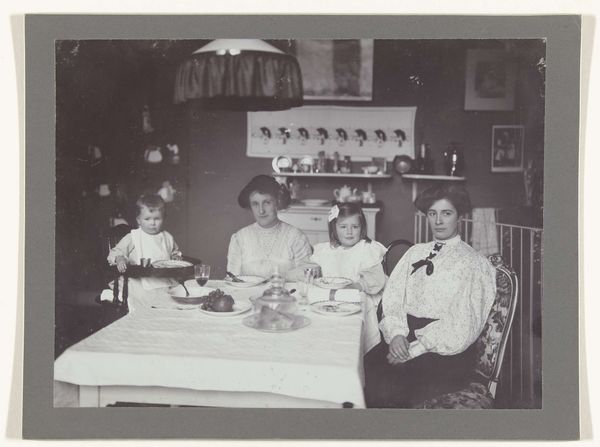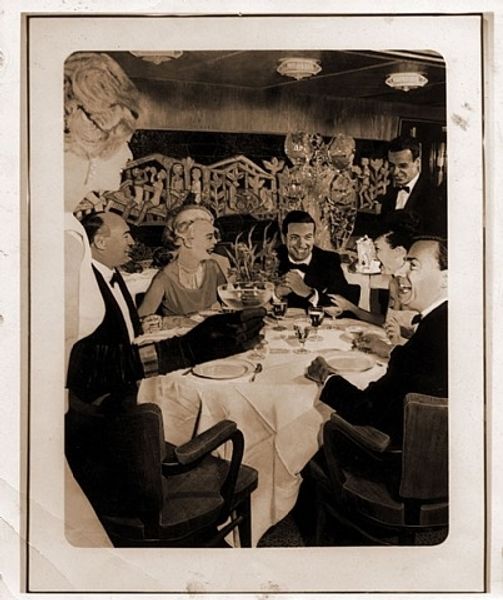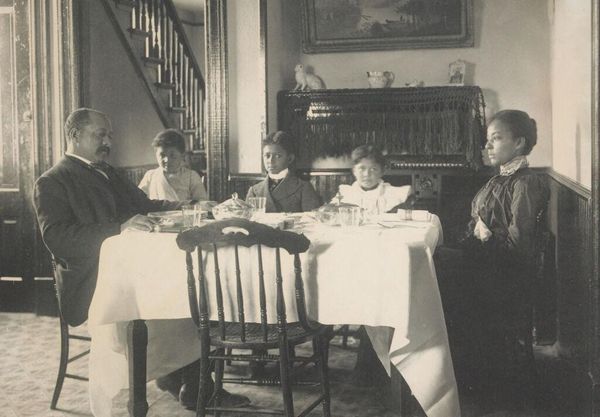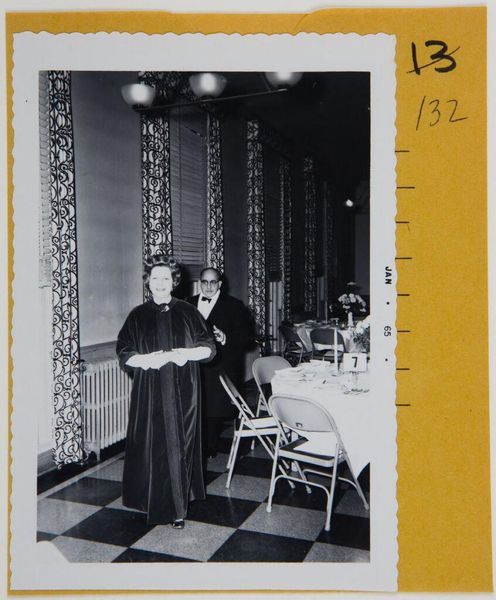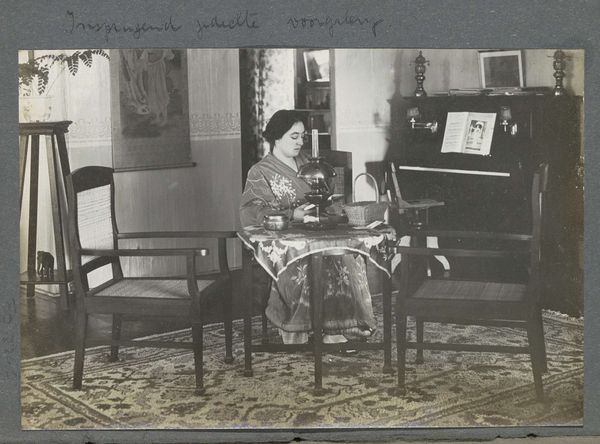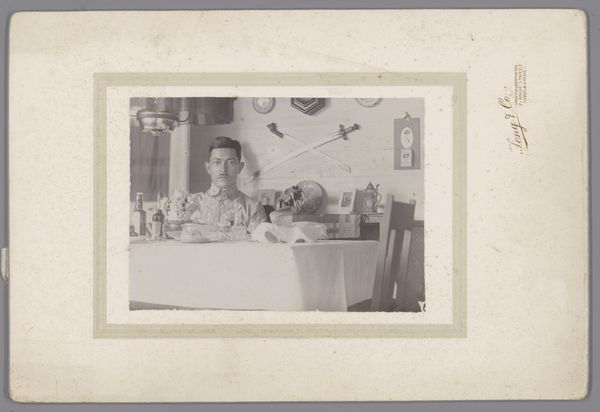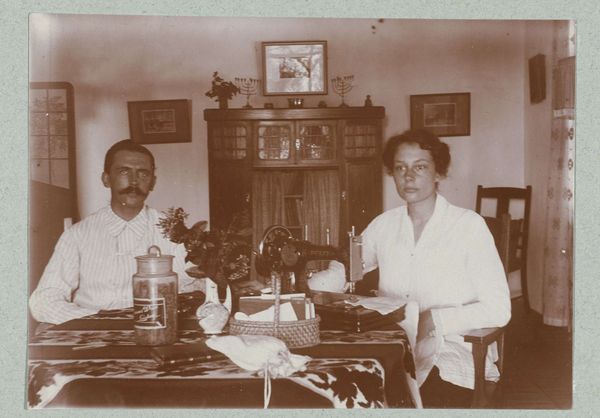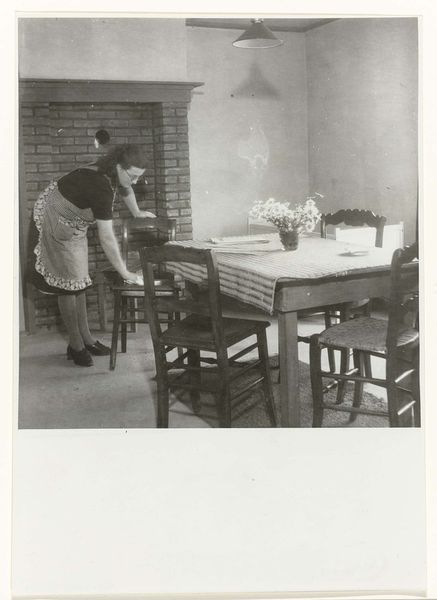
Eiso Bergsma in tropenkleding en Gerda Bergsma in lang gewaad zittend aan eettafel in woonhuis op Sumatra 1914 - 1926
0:00
0:00
anonymous
Rijksmuseum
photography
#
portrait
#
archive photography
#
photography
#
historical photography
#
historical fashion
Dimensions: height 97 mm, width 143 mm
Copyright: Rijks Museum: Open Domain
Curator: The sepia tones of this photograph create an almost dreamlike quality, don't you think? It feels incredibly intimate. Editor: Absolutely. We are looking at a photograph, dated between 1914 and 1926, now held at the Rijksmuseum. The title translates to 'Eiso Bergsma in tropical clothing and Gerda Bergsma in long gown sitting at the dining table in a house in Sumatra.' What immediately strikes me is the stark contrast of sartorial codes between the figures at the table. Curator: It is an unusual pairing. He, in light, loose attire that speaks of tropical comfort, and she, almost rigidly composed, adorned in what appears to be a kimono or long robe. The accoutrements of the table hint at a domesticity disrupted by colonial encounters. The imported china and silverware represent layers of history and cultural exchange. It raises questions about the nature of their relationship and their place in this Sumatran setting. Editor: Indeed. One has to consider the photographic act itself here, beyond just portraiture. This image would have served multiple purposes—personal documentation, and undoubtedly, a visual projection intended to elicit certain perceptions about colonial life back home in the Netherlands. Look how carefully she is styled. She embodies a cultivated grace positioned as an ideal within that context. What is she conveying about their existence there? How much of that is constructed for an external gaze? Curator: I am fascinated by the composition. Notice the screen in the background behind the gentleman, it suggests another world, an entirely different visual language just beyond their structured Western meal. Do you think that it speaks to the way memory and cultural identity persists even in displacement? Editor: It certainly hints at that duality, that tension between imposed order and the persistent presence of the local. This photograph is not just a record, but a coded document, speaking volumes about the complexities of colonialism and personal identity under its shadow. How might their children view this tableau? How do we reinterpret their story with hindsight? Curator: That layering of perspective—it’s why I find images like this so haunting and important. They remind us that even the most seemingly straightforward image can hold within it a world of complexities and unanswered questions. Editor: And remind us of the ethical responsibilities embedded in looking. Images from this era in particular call us to challenge received narratives, decentre perspectives, and honour subjugated voices that would have also occupied this space at this table.
Comments
No comments
Be the first to comment and join the conversation on the ultimate creative platform.
